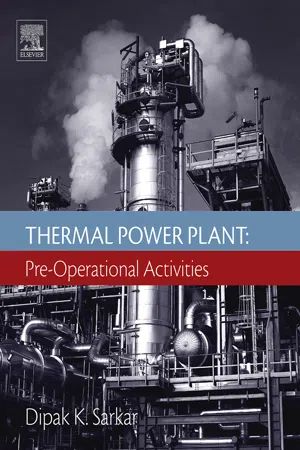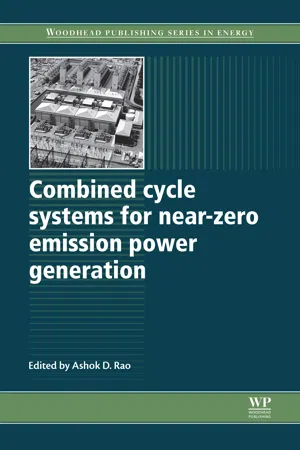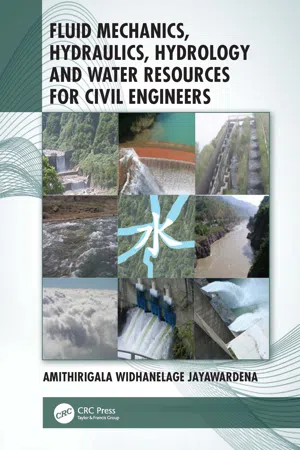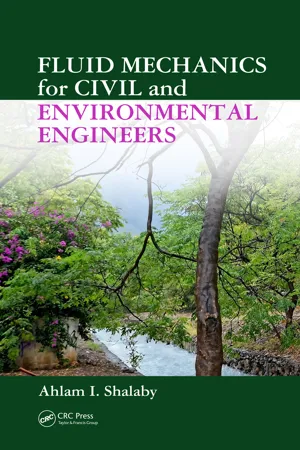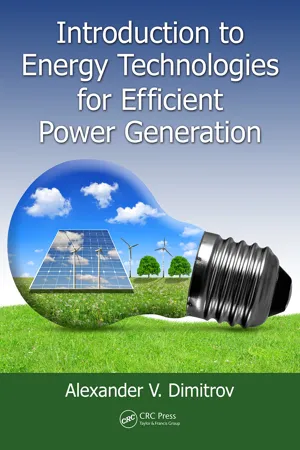Technology & Engineering
Reaction Turbine
A reaction turbine is a type of turbine that converts the energy from a fluid into mechanical energy. It operates on the principle of reacting to the fluid's pressure or flow. The fluid enters the turbine and is directed through fixed and moving blades, causing the rotor to spin and generate power.
Written by Perlego with AI-assistance
Related key terms
1 of 4
Related key terms
1 of 3
8 Key excerpts on "Reaction Turbine"
- eBook - ePub
Thermal Power Plant
Pre-Operational Activities
- Dipak Sarkar(Author)
- 2016(Publication Date)
- Elsevier(Publisher)
Source: From Fig. 213, P412, CHXIV The Theory Of The Steam Turbine, D.A. Wrangham, Theory and Practice of Heat Engine, Cambridge University Press, 1960.1.1.2.2 Reaction Turbine (Fig. 1.27 )
A Reaction Turbine is constructed of rows of stationary blades and rows of moving blades. The stationary blades act as nozzles. The expansion of steam in the Reaction Turbine occurs both in stationary or guide blades and in rotating or moving blades such that the pressure drop is about equally divided between stationary and rotating blades. Upon expanding across the moving blades, steam comes out as a high-velocity steam jet that does the mechanical work of rotating the turbine shaft.Fig.1.27 Pure Reaction Turbine.Source: What are Reaction Turbines? https://www.quora.com/What-are-Reaction-turbines .1.1.2.3 Axial turbine
In this turbine, steam flows in a direction parallel to the axis of the turbine.1.1.2.4 Radial turbine
Steam flow in this turbine takes place in a direction perpendicular to the axis of the turbine.1.1.2.5 Single-stage turbine
These turbines are mostly used for driving centrifugal compressors, blowers, and so on.1.1.2.6 Multi-stage turbines
They are used primarily for generation of power and are made in a wide range of power capacities varying from small to large.1.1.2.7 Single-shaft tandem compound turbine
Rotors of all the cylinders of this turbine are mounted on one and the same shaft and coupled to a single generator.1.1.2.8 Multishaft cross-compound turbine
In this turbine, the rotor shaft of each cylinder is placed parallel to each other.1.1.2.9 Turbine with throttle governing
In a turbine with throttle governing, fresh steam enters through one or more simultaneously operated control or throttle valves and the steam flow is controlled by the degree of opening of these valves. The upstream steam pressure at throttle valves will be constant, irrespective of the turbine loading, but the pressure after throttle valves will reduce as the valve opening reduces. Throttle governing is not suitable for part load operation or for fluctuating load demand. - eBook - ePub
Hydroelectric Energy
Renewable Energy and the Environment
- Bikash Pandey, Ajoy Karki(Authors)
- 2016(Publication Date)
- CRC Press(Publisher)
11 Reaction TurbinesRotation of the runner in a Reaction Turbine results from the reaction to its blades changing the direction and momentum of the water flow. The flow in Reaction Turbines is continuous over the length of the water passage with the runner rotating immersed in water flowing continuously over all its blades. Figure 11.1 shows an example of how all the blades of a Reaction Turbine, in this case a Kaplan, are in the water and simultaneously interacting with the flow. This is markedly different from impulse turbines with which the runner rotates in the air with a few of the buckets interacting with a high-velocity jet of water at any one time. The simultaneous application of torque on all the blades of a Reaction Turbine results in significantly more power produced per unit head compared to an impulse turbine using the same sized runner.Reaction Turbine runners are designed to make use of both the pressure energy and kinetic energy of the water flow. The inlet structure, consisting of a spiral casing and a wicket gate with guide vanes designed to introduce swirl or circulation as the water enters the runner, typically transforms only a part of the hydraulic pressure into kinetic energy as the water passes through it. As a result, the flow velocity at the runner inlet is relatively low for Reaction Turbines compared to impulse turbines. The runner converts the remaining pressure head to kinetic energy and ultimately transforms both the pressure and velocity of the water into mechanical power. To extract the maximum power from the available head, hydraulic pressure is often below atmospheric when the water exits the runner. This is accomplished through the use of a draft tube, described in Section 11.2 .Reaction Turbines have higher specific speeds than impulse turbines—that is, for similar head and power output conditions, Reaction Turbines run at significantly higher speeds. The most widely used Reaction Turbine designs are the Francis, Kaplan, and propeller. In recent years, compact tubular bulb turbines have become popular for low and very low head applications. Francis turbines, which utilize radial–axial flow, are used across a large range of medium heads (40–700 m) whereas Kaplan and propeller turbines utilize axial flow and are suitable for low head sites (10–80 m). - eBook - ePub
- D. Yogi Goswami, Frank Kreith, D. Yogi Goswami, Frank Kreith(Authors)
- 2017(Publication Date)
- CRC Press(Publisher)
12Hydraulic Turbines
Roger E.A. Arndt and Leonardo P. Chamorro CONTENTS 12.1 General Description 12.1.1 Typical Hydropower Installation 12.1.2 Turbine Classification 12.1.2.1 Impulse Turbines 12.1.2.2 Reaction Turbines 12.2 Principles of Operation 12.2.1 Power Available and Efficiency 12.2.2 Similitude and Scaling Formulae 12.3 Factors Involved in Selecting a Turbine 12.3.1 Performance Characteristics 12.3.1.1 Impulse Turbines 12.3.1.2 Reaction Turbines 12.3.1.3 Performance Comparison 12.3.2 Speed Regulation 12.3.3 Cavitation and Turbine Setting 12.4 Performance Evaluation 12.4.1 Model Tests 12.5 Numerical Simulations 12.6 Field Tests 12.7 Other Concepts: Hydrokinetic Turbines Defining Terms References Further InformationA hydraulic turbine is a mechanical device that converts the potential energy associated with a difference in water elevation (head ) into mechanical work. Modern hydraulic turbines are the result of many years of gradual development. Economic incentives have resulted in the development of very large units (exceeding 800 MW in capacity, i.e., two orders of magnitude larger than their wind counterparts) with efficiencies that are sometimes in excess of 95%.However, the emphasis on the design and manufacture of very large turbines has shifted to the production of smaller units, especially in developed nations, where much of the potential for developing large base-load plants has been realized. At the same time, the sustained increase in the cost of energy has made many smaller sites economically feasible and has greatly expanded the market for smaller turbines. The increased value of energy also justifies the cost of refurbishment and increasing the capacity of older facilities with modern runners having higher efficiency and greater capacity. The introduction of high-performance computational tools in the last decade has had considerable influence on the design of hydraulic systems, their operation, and control. - eBook - ePub
- Don M. Pirro, Martin Webster, Ekkehard Daschner(Authors)
- 2017(Publication Date)
- CRC Press(Publisher)
(As a result of this expansion to provide steam velocity, this arrangement may be referred to as a 50% Reaction Turbine.) The moving blades form the walls of moving nozzles that are designed to permit further expansion of the steam and to partially reverse the direction of steam flow, which produces the reaction on the blades. The distinguishing characteristic of the Reaction Turbine is that a pressure drop occurs across both the moving and stationary nozzles, or blades (Figure 14.2). Normally, Reaction Turbines use a considerable number of rows of moving and stationary nozzles through which steam flows as its initial pressure is reduced to exhaust pressure. The pressure drop across each row of nozzles is, therefore, relatively small, and steam velocities are correspondingly moderate, permitting medium rotating speeds. Reaction stages are usually preceded by an initial velocity compounded impulse stage, as in Figure 14.2, in which a relatively large pressure drop takes place. This results in a shorter, less costly turbine. In the radial flow reaction, or Ljungstrom, turbine, instead of the steam flowing axially through alternating rows of fixed and moving blades, it flows radially through several rows of reaction blades. Alternate rows of blades move in opposite directions. They are fastened to two independent shafts that operate in opposite directions, each shaft driving a load. FIGURE 14.1 Turbine with impulse blading. Velocity compounding is accomplished in the first two stages by two rows of moving blades between which is placed a row of stationary blades that reverses the direction of steam flow as it passes from the first to the second row of moving blades - Ashok D Rao(Author)
- 2012(Publication Date)
- Woodhead Publishing(Publisher)
Most axial-flow turbines consist of more than 1 stage; in a typical industrial turbine, there are more than 15 stages. The front stages are usually impulse (zero reaction) and the later stages have 50% reaction or higher. The impulse stages produce about twice the output of a comparable 50% reaction stage, although their efficiency is less.Degree of reaction (turbine)
The relative proportions of energy transfers obtained by a change of static and dynamic pressure are used to classify turbomachinery. The parameter used to describe this relationship is called the degree of reaction. Reaction is the energy transfer by means of a change in static pressure in a rotor to the total energy transfer in the rotor.[2.36]whereH 01 = total enthalpy entering the nozzleH 04 = total enthalpy leaving the bladeh 2 = static enthalpy at the leading edge of the bladeh 3 = static enthalpy at the trailing edge of the bladeU 1 = blade velocity at the leading edge of the bladeU 2 = blade velocity at the trailing edge of the bladeV 1 = absolute velocity leaving the nozzle entering the blade (parallel to the exit angle of the nozzle)V 2 = absolute velocity leaving the blade (parallel to the following nozzle entrance angle)W 1 = relative velocity entering the blade (parallel to the blade entrance angle)W 2 = relative velocity leaving the blade (parallel to the blade exit angle).In a turbine not all energy supplied can be converted into useful work even with an ideal fluid. There must be some kinetic energy at the exit velocity. The velocity exiting from a turbine is considered unrecoverable. The total head (H ad ) divided by the total head plus the absolute exit velocity (V 4 ) head is known as the utilization factor (∊).Thus the utilization factor is defined as the ratio of ideal work to the energy supplied.[2.37]The effect of the utilization factor with speed is shown in Fig. 2.32- Amithirigala Widhanelage Jayawardena(Author)
- 2021(Publication Date)
- CRC Press(Publisher)
Hydraulic ram can be used when there is a large volume of water flowing at a pressure higher than necessary. Some of the dynamic pressure energy of the main body of water is used to increase the static pressure on part of the supply. For the hydraulic ram to function, there must be a source of water at an elevation higher than where the ram is located. The water is allowed to run through a pipeline towards the ram, which has a valve to let the water in. When the flow reaches its maximum velocity, the inlet valve is suddenly closed, resulting in a build-up of pressure due to the inertia of the flow. The build-up pressure then opens an exit valve forcing the fluid to flow into the delivery pipe. The pressure in the ram falls, and the entry valve opens allowing more water to flow in and build up the pressure. This cycle is repeated. The water wheel used in some parts of the world in ancient times operates on the same principle.12.2.3 Rotodynamic type (turbomachines)
In this type of machines, there is a transformation between pressure and velocity heads. There is a significant velocity change across the pump. If the valves in a rotodynamic machine were closed, there will only be an increase in temperature. The casing will not burst. There are three common rotodynamic type pumps; namely, centrifugal pumps, axial flow pumps and mixed flow pumps. They are used mainly for high-flow and low-pressure situations.12.3 Types of turbines
There are two main categories of turbines; namely, impulse turbines and Reaction Turbines. Pelton wheel is an example of an impulse turbine, whereas Francis and Kaplan turbines are reaction type of turbines.In both types, fluid passes through a runner having blades. The momentum of the fluid in the tangential direction is changed and so a tangential force on the runner is produced. The runner rotates and does work. The energy in the fluid is reduced.In impulse turbines, there is no change in static pressure across the runner which is open and at atmospheric pressure. The energy change is from kinetic to mechanical. In Reaction Turbines, static pressure decreases as the fluid passes through the runner which is enclosed.For any turbine, the fluid energy is in the form of pressure. In water turbines, it is the difference between the upper and lower water levels that gives this pressure. In steam turbines, it is the steam pressure produced by heat. In gas turbine, it is the gas pressure produced by chemical energy.12.4 Centrifugal pump
The flow in a centrifugal pump is radially outwards. They are so called because the centrifugal force or the variation of pressure due to rotation is an important factor in their operation. A rotating impeller provides the energy to the fluid in the form of a velocity head which is converted into a pressure head as the fluid leaves the pump. There is a pronounced change in the radius from inlet to outlet. Centrifugal pumps operate efficiently for water and other liquids with low viscosity. They are not suitable for high-viscosity fluids and high pressure. Multi-stage pumps can be used to deliver high pressure.- Ahlam I. Shalaby(Author)
- 2018(Publication Date)
- CRC Press(Publisher)
illustrated in Figure 4.27. The impulse of the jet of fluid striking the blades generates the torque. The total head, H = (p / γ) + (v 2 / 2 g) + z (minus any head losses) of the incoming fluid flow is converted to a large velocity head, v 2 / 2 g at the nozzle exit (forced jet). Thus, because the fluid in the forced jet is exposed to the atmosphere, the hydraulic energy delivered to the turbine is all kinetic energy. Because the diameter of the nozzle is small and thus limits the magnitude of the flowrate, impulse turbines are efficient for fluid flow systems with small flowrates, Q and large heads, h turbine. Large heads, h turbine may be created by locating the turbine nozzle at an elevation that is significantly below the water source, as illustrated in Figure 4.29. A Reaction Turbine, such as a Francis or a Kaplan turbine extracts hydraulic power from a fluid flowing (at a high pressure) at the specified flowrate, Q in a pipe or open channel, which rotates the vanes of the turbine, filling the casing with fluid, and leaving the turbine through a draft tube, converting it to shaft power, as illustrated in Figure 4.28. Because the fluid is flowing under a high pressure, the hydraulic energy delivered to the turbine is both pressure energy and kinetic energy. And, because the magnitude of the flowrate in the pipe or open channel is limited only by the selected design pipe or channel size, Reaction Turbines are efficient for fluid flow systems with large flowrates, Q and small heads, h turbine. In order for the Reaction Turbine to operate properly, the flow leaving the turbine must be submerged as it leaves the turbine through a draft tube, which is an integral part of a Reaction Turbine, as illustrated in Figure 4.30. The draft tube has a gradual expansion in diameter (conical diffuser) and is designed to serve two main purposes- Alexander V. Dimitrov(Author)
- 2017(Publication Date)
- CRC Press(Publisher)
2Conversion of Thermal Energy into Mechanical Work (Thermal Engines)Energy-related (power) technologies may be treated as a combination of engineering-technical methods of energy and work conversion employed to facilitate human life. They are divided into two main groups. The first group comprises technologies of heat conversion into another type of energy (mechanical, electrical, electromagnetic, etc.) while the second one comprises technologies of heat transfer, accumulation, and regeneration. Each thermal technology discussed herein will be illustrated by specific physical schemes and devices. We shall consider them in the following order:•Technologies of mechanical work performance (so called thermomechanical technologies) •Technologies of generation of electrical energy (thermoelectric technologies) •Technologies of heat transformation (regeneration and recuperation) •Technologies of heat transfer and collection (transfer and accumulation) •Technologies creating comfortable environment (air conditioning and ventilation)Thus, we will treat a certain technology as an object of study of respective scientific-applied research fields, on one hand, and we will follow the teaching programs on “Power engineering,” “Transport management” and “General mechanical engineering,” on the other hand.2.1 Evolution of Engine TechnologiesAs is known from physics, energy conversion follows a natural course, that is, energy of motion of macro- and microbodies (popular as mechanical energy) is converted into heat by mechanisms that are studied by tribology (including dry, semi-dry, viscous, or turbulent friction). No opposite transformation is observed in nature. Heat conversion into energy needed for the operation of machines and mechanisms was an impossible task for primitive people as well as for those living in slave-holding* and feudal†
Index pages curate the most relevant extracts from our library of academic textbooks. They’ve been created using an in-house natural language model (NLM), each adding context and meaning to key research topics.
Explore more topic indexes
Explore more topic indexes
1 of 6
Explore more topic indexes
1 of 4
